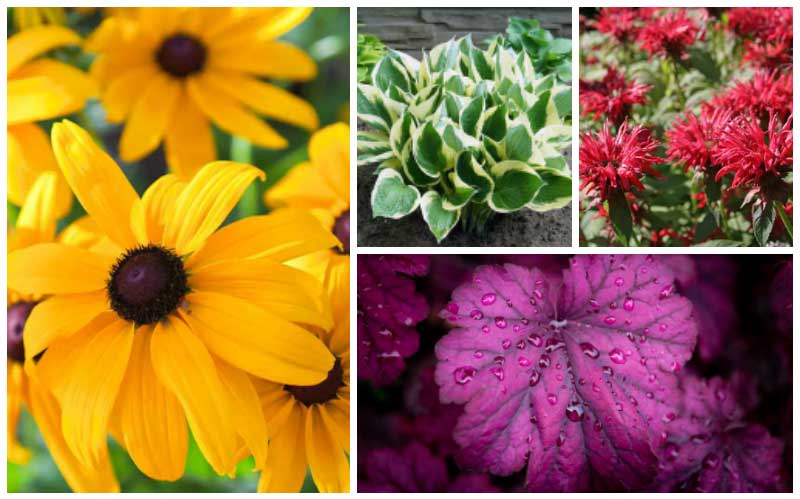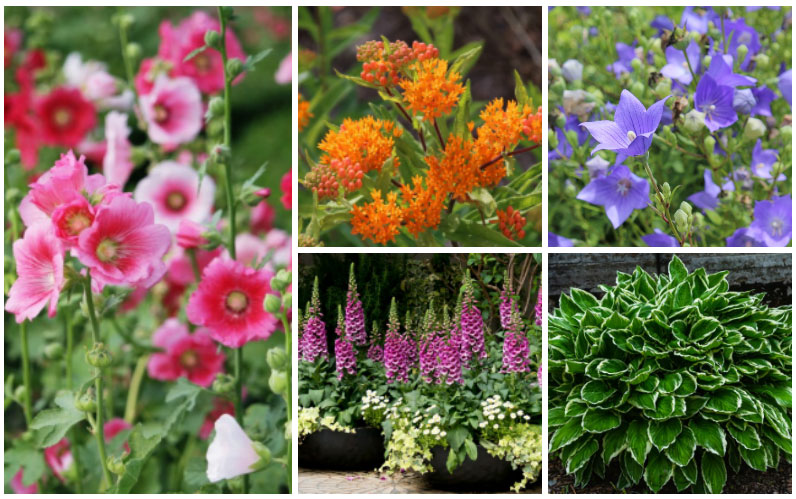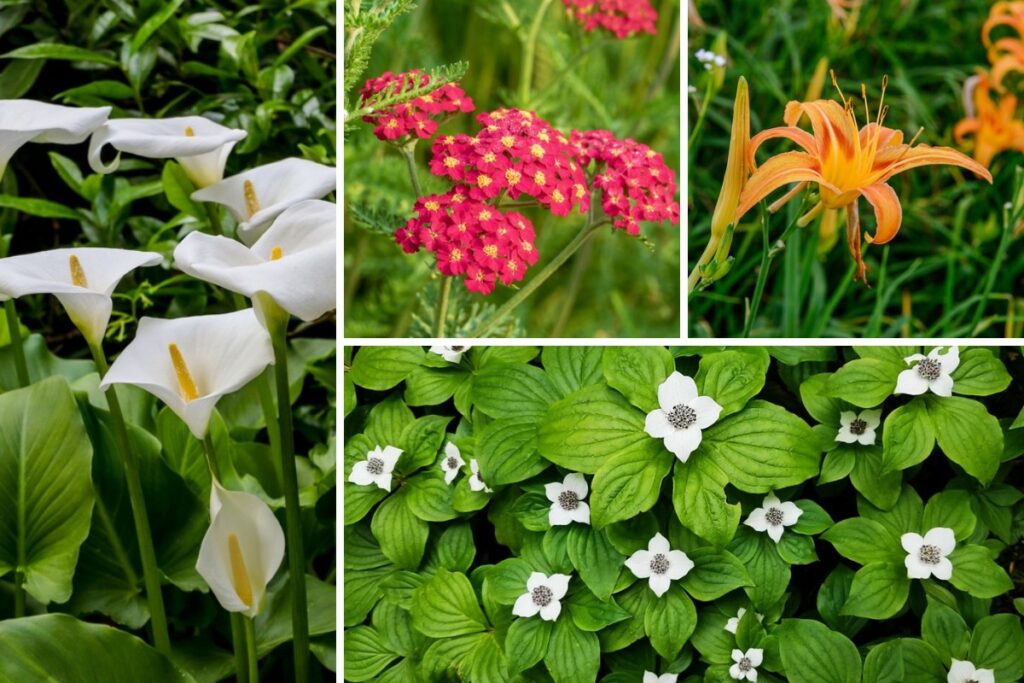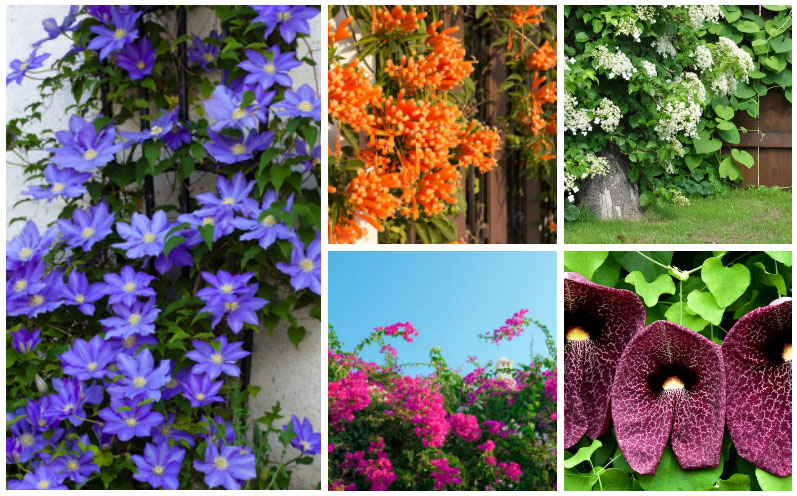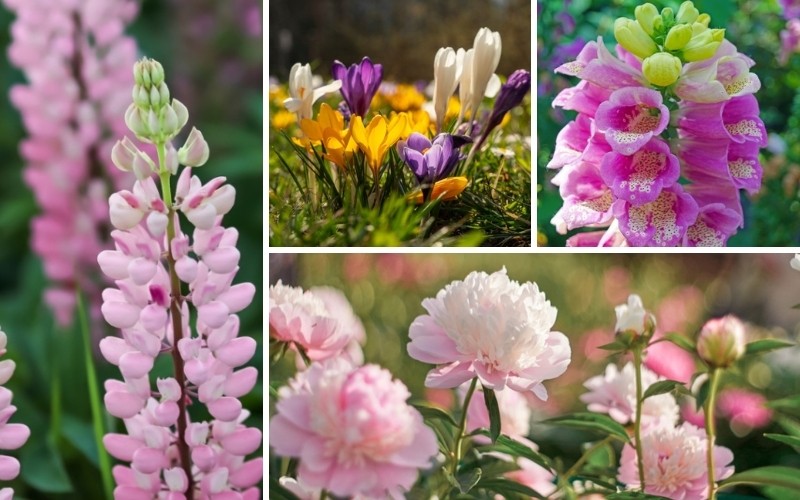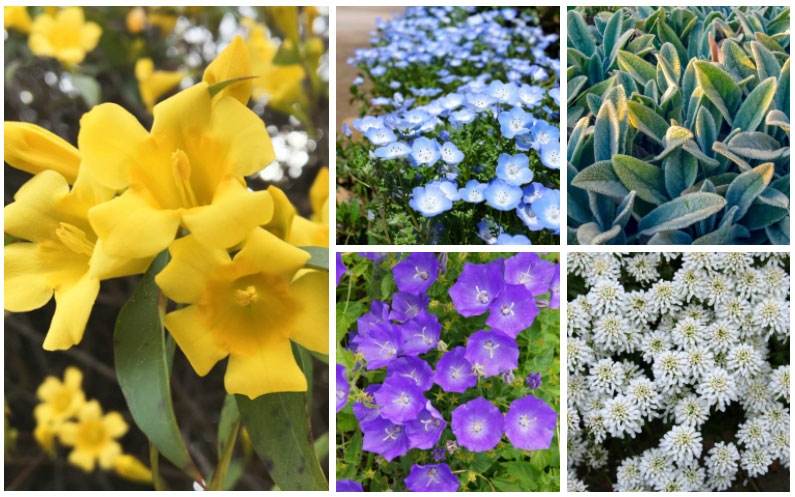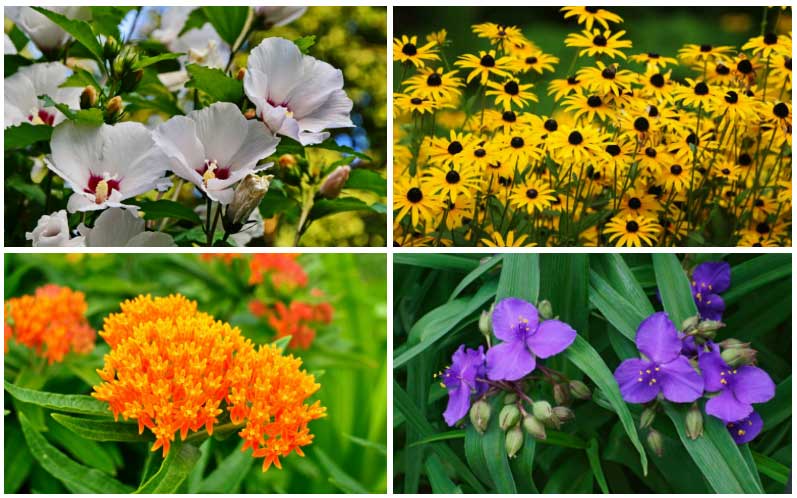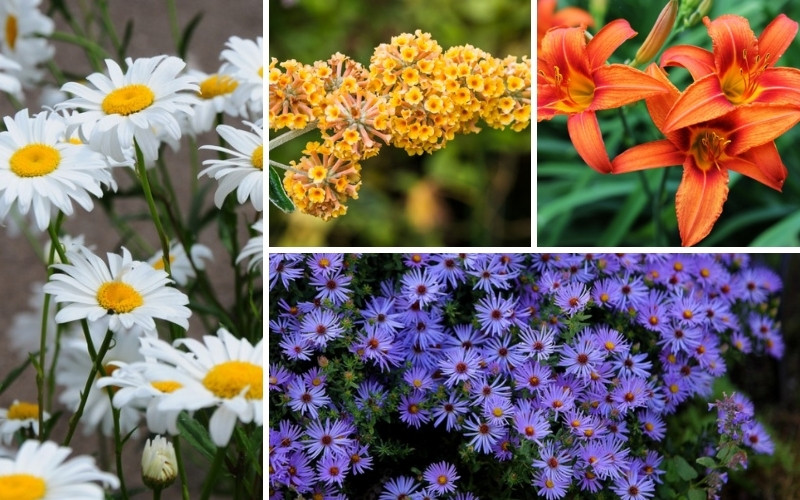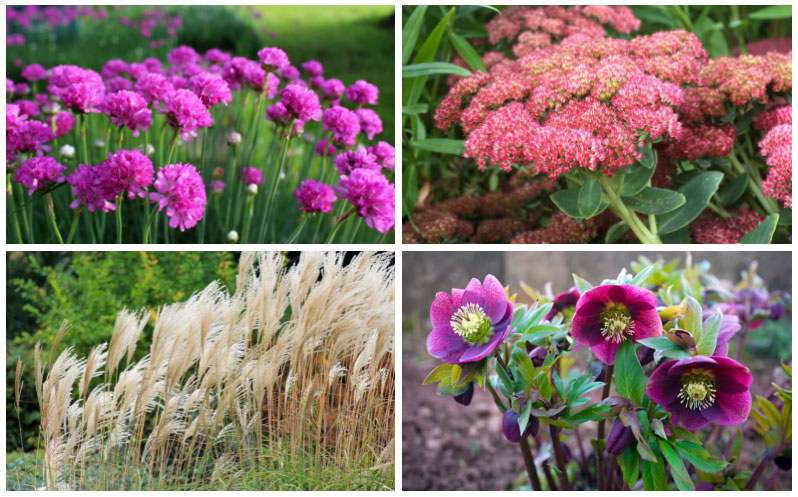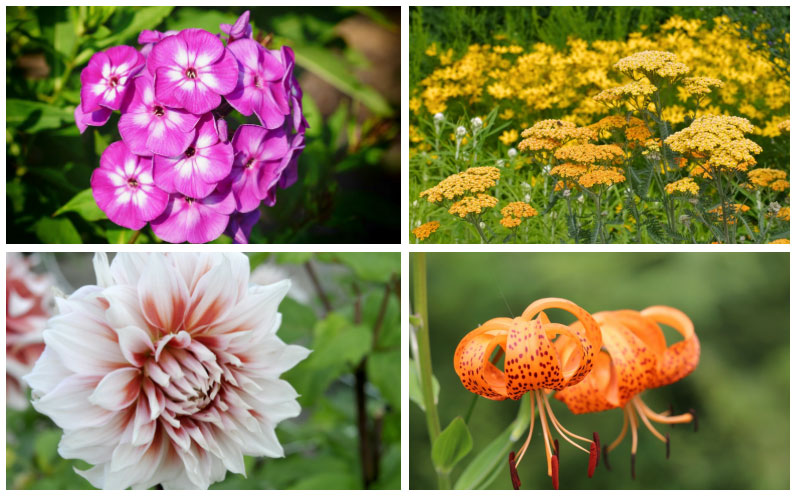
If you love having plants that will last for a long time, then you need to add perennials to your garden. These plants will live for more than 2 years, creating a beautiful landscape in your garden or backyard.
Zone 8 Plants
The USDA Plant Hardiness Zone Map is the guideline that you should follow when you’re shopping for plants. Being in zone 8 means that you should choose plants that can tolerate a temperature range of 10°F to 20°F.
Luckily, there are lots of options available. Here are 15 of the most popular perennials that grow in zone 8.
1. Creeping Thyme
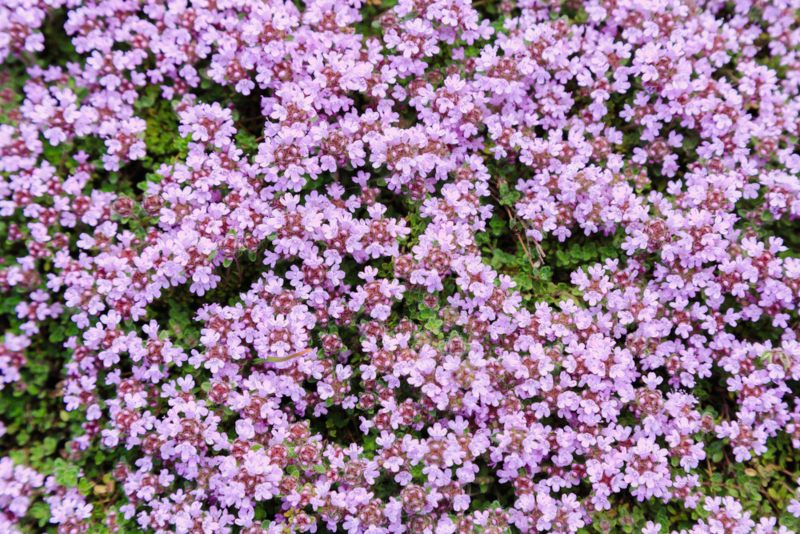
If you’re looking for an aromatic groundcover to grow among stepping stones or in your patio, creeping thyme will be a suitable perennial. It’s an evergreen with lightly haired foliage that grows in several zones and can withstand the low temperatures.
Creeping thyme grows quickly creating a colored cover that attracts butterflies. It can survive in the sun or shade.
2. Phlox Paniculata
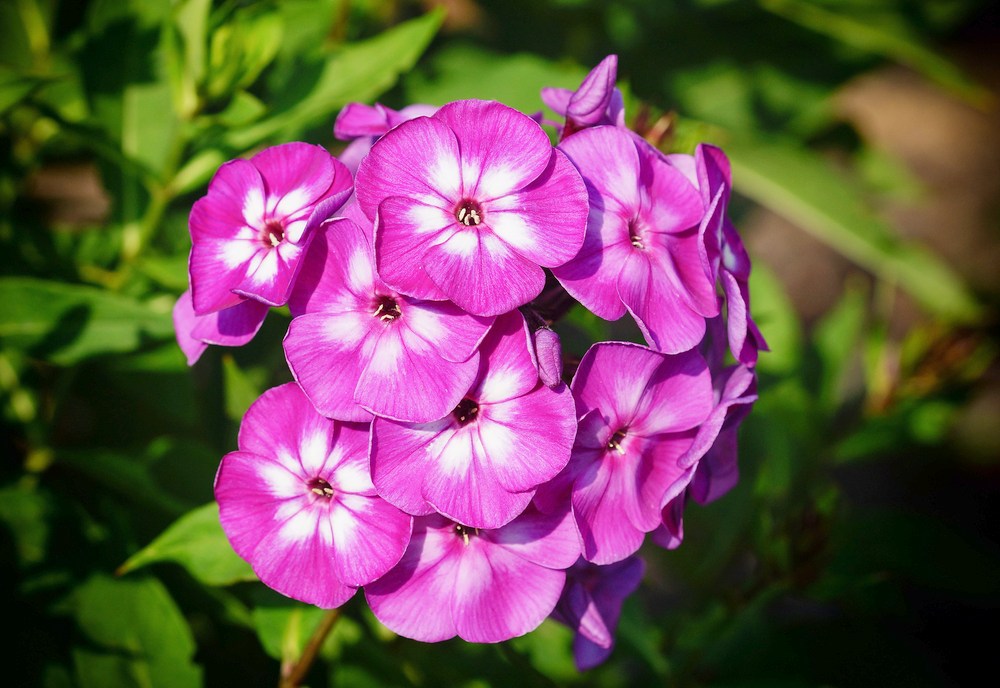
These fragrant perennials, also known as Blue Paradise, will bloom throughout the summer. The flowers have large lavender-blue heads and tiny red centers.
Hummingbirds and butterflies love them but they’re subject to mildew and root rot if you don’t take care of them. They’re perfect for beds and borders.
3. Agastache Blue Fortune
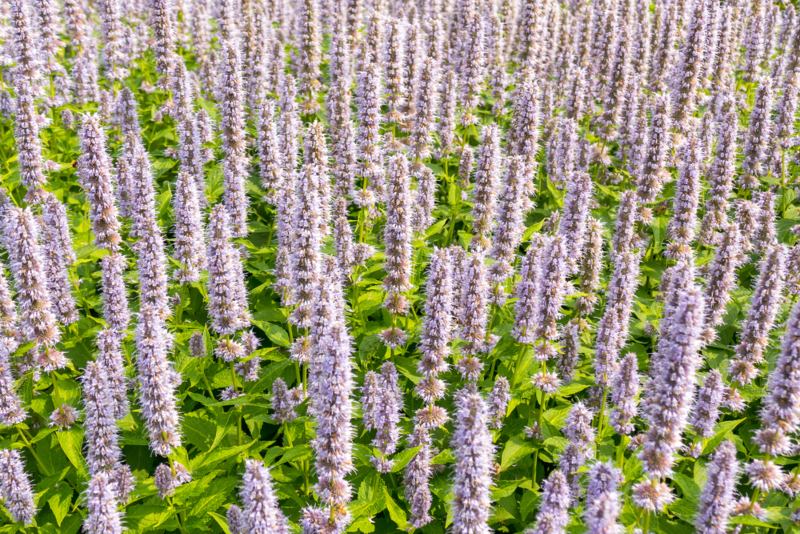
These showstoppers have a long blooming season from midsummer till early fall with spiked flowers and foliage that smells like licorice. This is why lots of people choose to use them to add a distinctive flavor to their cold drinks.
The stems can reach a height of 3 feet so they’re used to add colorful vertical lines to your landscape design. When other plants are fading away, your Blue Fortune will add color to your garden.
4. Lemon Queen Sunflower
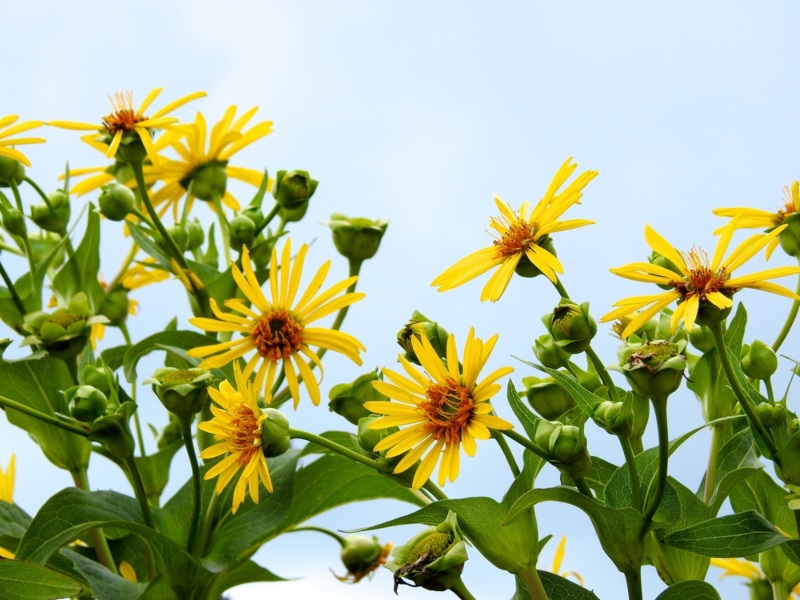
Lemon Queen is a low-maintenance perennial that can grow in several soil conditions. It usually blooms from late summer until fall and will bloom again the next season.
Bees, birds, and hummingbirds are very fond of this plant, so you should expect to see them often. The flowers have yellow ray florets and a dark yellow central.
5. Achillea Terracotta (Yarrow)
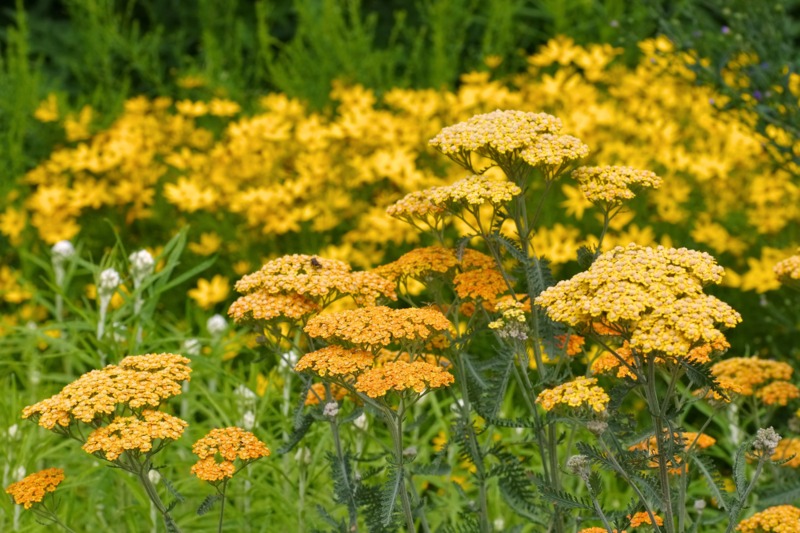
A gardener’s favorite, Achillea has a pleasant fragrance and feathery foliage. The flowers bloom in the summer growing orange and peachy petals.
Achillea loves full sun exposure but can tolerate partial shade. However, you’ll see the brightest colors that attract butterflies only when the flowers have access to the sun.
6. Dahlia Frost Nip
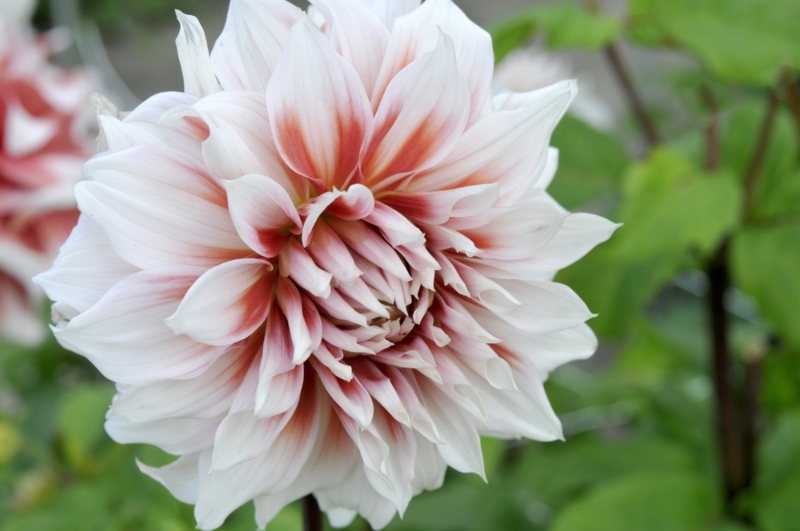
These flowers are also known as Dinner Plate Dahlia due to their massive size. They have eye-catching raspberry pink flowers with white edges so they’re great for bouquets.
They’ll bloom from midsummer till the first frost. They love full sun but can grow in partial shade. Deadheading is necessary to grow more flowers.
7. Ox-Eye Daisy
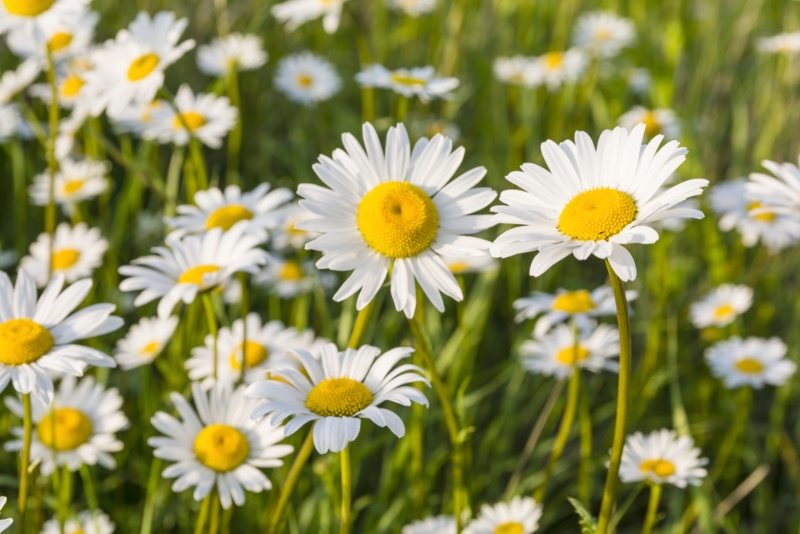
Bees and butterflies love the amazing fragrance of this floriferous plant. It’s a free-flowering perennial that produces single white daisies that have bright yellow centers.
The stiff stems can reach a height of 26 inches and the plant will self-seed, so it spreads widely in your garden. It can grow in the patio or small containers.
8. Dicentra
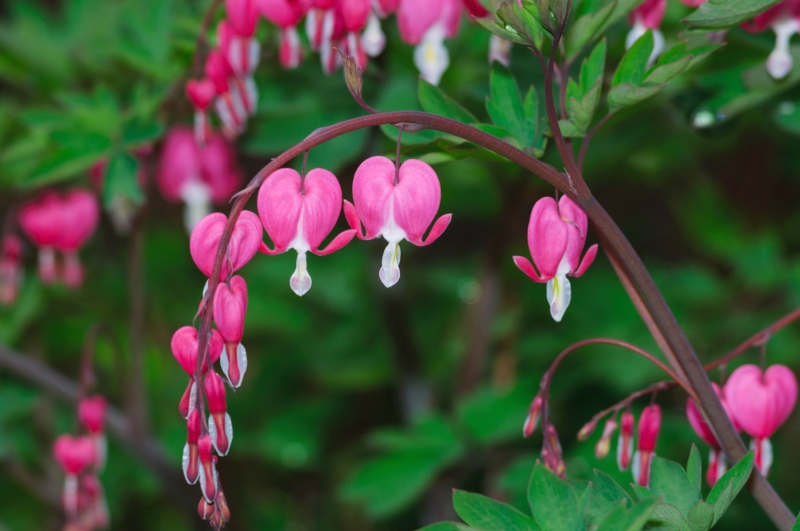
Also known as Bleeding Hearts, these perennials require partial shade to blossom. They start blooming in late spring and will live throughout the summer if you give it enough attention.
These tuberous perennials have dangling pink flowers with protruding white petals surrounding the hearts. Make sure that your pets don’t eat them because they cause discomfort.
9. Henry’s Lily
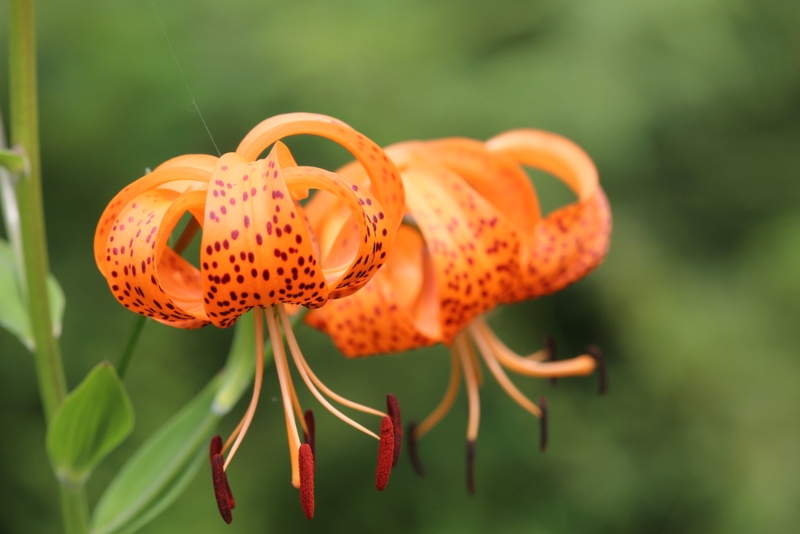
These flowers are native to China and are very popular thanks to their nodding eye-catching flowers. They can reach a maximum height of 8 feet and they’re loved by bees and butterflies. However, they’re toxic to cats.
The flowers have orange petals with maroon spots and they point upward. They’ll bloom better in partial shade but can tolerate the sun.
10. Echinacea Tomato Soup
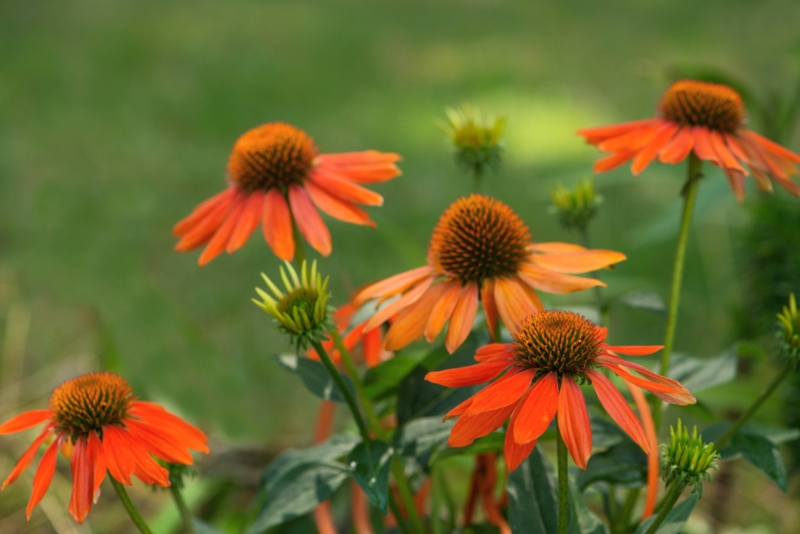
Everyone loves the sight of these massive tomato-red flowers in their garden or backyard. They’re low-maintenance and don’t require much water.
They’re perfect for beds and borders and will attract butterflies and hummingbirds. If you don’t cut off the flower heads in the fall, expect to see birds feeding on their delicious seeds.
11. Sea Thrift
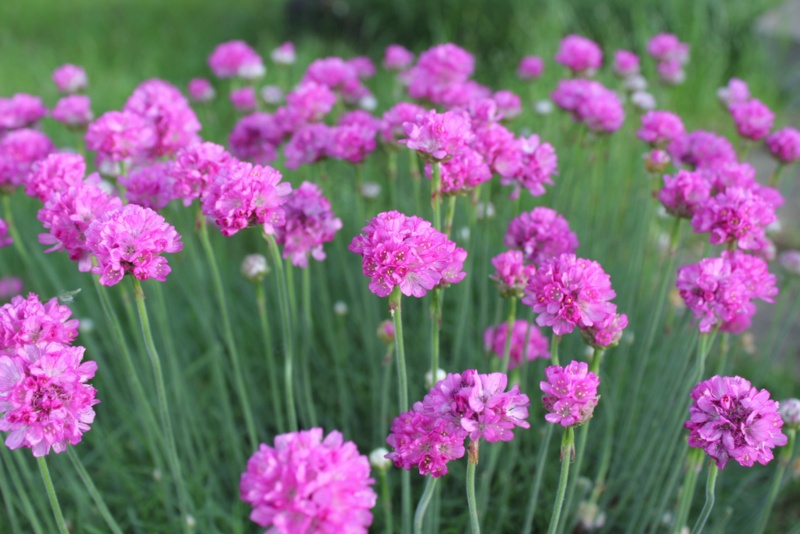
This compact evergreen perennial has round colorful clusters. They could be pink, lavender or white. The dense leaves spread slowly and the flowers start blooming in the spring.
Sea thrift needs full sun but grows beautifully in infertile soil. Once it’s established, it will be resistant to drought and salt. Deadheading will most probably produce more flowers.
12. Rozanne
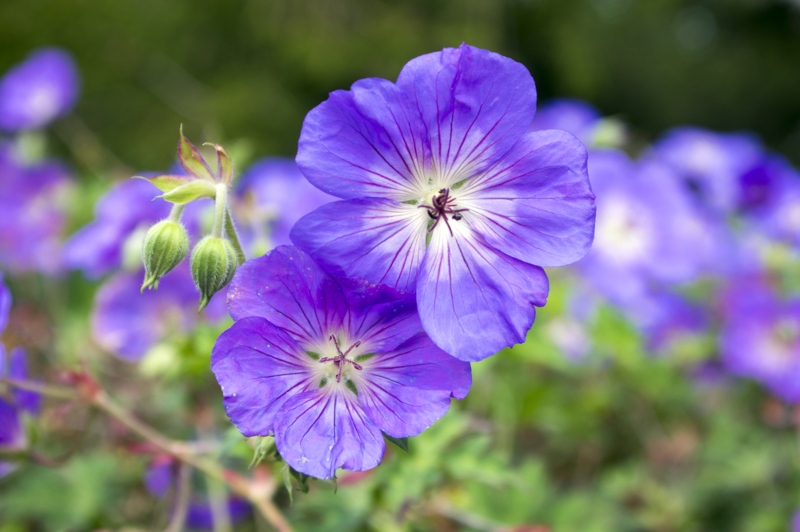
The beauty of these blue flowers is outstanding. Moreover, they can be grown in any soil regardless of the pH level. It’s a perfect choice for your balcony, patio or garden.
Every spring, you’ll see that Rozzane will come back bigger and better. The large violet-blue flowers will bloom from late spring until the first frost.
13. Gaillardia
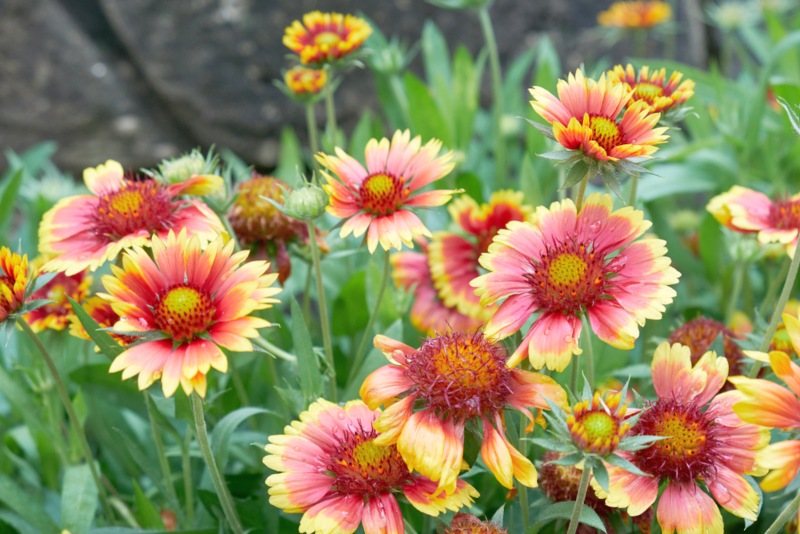
These drought-resistant colorful flowers are short-lived. They require full sun and will bloom from summer till fall.
They’re blanket flowers and available in several warm shades including wine red, yellow, orange, peach or combinations of red and yellow. Faded flowers should be removed to encourage further blooms.
14. Spotted Dead Nettle
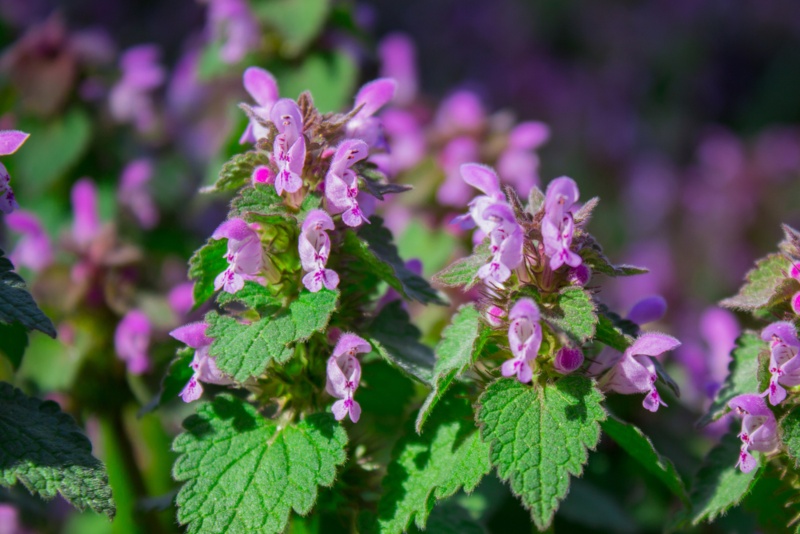
This groundcover grows beautifully in the partial sun, so it’s a great plant to add to your shade garden. The heart-shaped leaves have small magenta, pink or white flowers that bloom from spring till summer.
This plant is resistant to deer and rabbits. Cutting back is recommended to encourage new foliage after flowering.
15. Ajuga Reptans
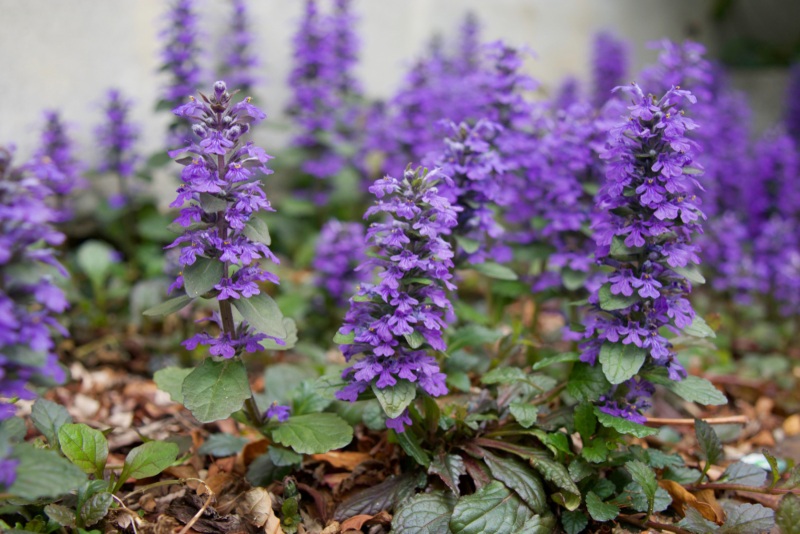
Known as Carpet Bugle, this evergreen perennial has glossy purplish leaves with spike-shaped blue-violet flowers. It spreads in areas where grass can’t grow and this is the main reason why gardeners love this eye-catching cover. It grows in partial and full shade and is generally pest-free. It’s a good choice for beds, borders, slopes, and banks.
To provide the best growing environment for your perennials, don’t start too early. Ask your neighbors and other gardening enthusiasts in your area about their experience but don’t be scared to experiment with your own choices.





